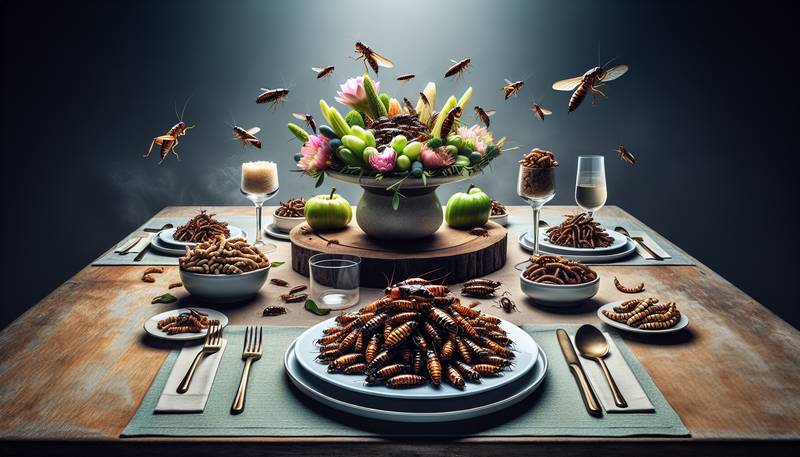Insects: The Future of Sustainable Protein?

Unexpected Guests at the Dinner TableWhen dinner is served, most people envision a plate brimming with succulent beef, fragrant chicken, or perhaps a colorful array of plant-based wonders. But imagine, just for a moment, if your plate were to feature a heap of crispy crickets, or a side of mealworms sautéed with garlic. Before you raise an eyebrow, consider this: what if these unassuming critters are the culinary game changers we never knew we needed? It seems insects have been busy plotting their gastronomic takeover while we’ve been busy worrying about gluten.Insects have long been a staple in many parts of the world. Over two billion people chow down on these mini protein powerhouses every day! Sure, the thought of munching on a grasshopper might give some a mild case of the heebie-jeebies, but with a bit of seasoning and perhaps a cheeky recipe, these critters could very well end up as the life of the buffet.Protein Powerhouse: Bugs vs. BeefThe nutritional value of insects is undeniably impressive. Let's break down the protein content—because who wouldn't want to flex their culinary muscles while also boosting their protein intake? - Crickets: On average, contain around 60% protein by weight. That's like having a chicken breast in bug form!
- Mealworms: These wriggly tasty bites come in at about 50% protein. They’re like the secret agents of the protein world—striking when you least expect it!
- Grasshoppers: With approximately 30% protein and a healthy dose of essential amino acids, they’re the overachievers of the insect brigade.
Not only do bugs serve up a protein punch, but they also boast healthy fats, vitamins, and minerals. Plus, they don't come with unnecessary mood swings, unlike some of us when we're hangry. The Environmental AngleThe environmental impact of traditional livestock farming is enough to make a vegan cry. Between methane emissions and the staggering amount of water required to raise cattle, the situation isn't pretty. Insects, on the other hand, come with a lighter ecological footprint. They require significantly less land, water, and feed to produce the same amount of protein as their four-legged counterparts. Did you know that crickets need about 12 times less feed than cattle for the same protein output? It’s as if they’ve tapped into some sort of magical protein-producing power that cows simply can’t fathom. Cooking with CrittersBefore you run out to catch your own bugs (although that could be a fun Saturday afternoon activity), many companies now offer insects in convenient forms. Flour made from crickets? Check. Roasted spiced grasshoppers? Double check. Insects can be incorporated into a variety of dishes, from smoothies to tacos. Feeling adventurous? A cricket protein bar could be your new post-workout snack! Just make sure to chew with your mouth closed—nobody needs a protein shower during their gym session.Here’s a nifty idea: instead of setting up a regular BBQ, invite friends over for an “insect feast.” You could have cricket sliders, mealworm chili, and for dessert, chocolate-covered ants. Who said dining couldn't be an adventure?The Cultural ShiftGetting people on board with eating insects may require a teensy bit of cultural adjustment. Food habits are deeply ingrained, and the thought of munching on bugs might make some cringe. However, as the conversation around sustainability increases, so does the openness to new food sources. It’s not just a trend; it might soon become a staple—and who knows? We might all look back and chuckle at how squeamish we were.The rise of food influencers and chefs experimenting with insect-based dishes could accelerate this change. With the right marketing, crickets could be as trendy as avocados. One moment you’re snacking on chips, and the next, you’re offering your friends a “tasty cricket dip” at the next get-together.Hopping into the FutureAs the world grapples with food security and environmental concerns, insects present a tantalizing option for the future of sustainable protein. While the idea of eating bugs might seem bizarre to some, the benefits are undeniable. It’s not just about survival; it’s about thrival (yes, that’s a word we just made up).Insects might just be the unsung heroes of nutrition, waiting in the wings and ready to take center stage. So, as we bonk our heads against the wall figuring out how to feed the growing population, it might be wise to look down, not up, and embrace the opportunities hopping right in front of us. With a little creativity in the kitchen, the future of food could be as exciting as a bug’s life.
|
|







